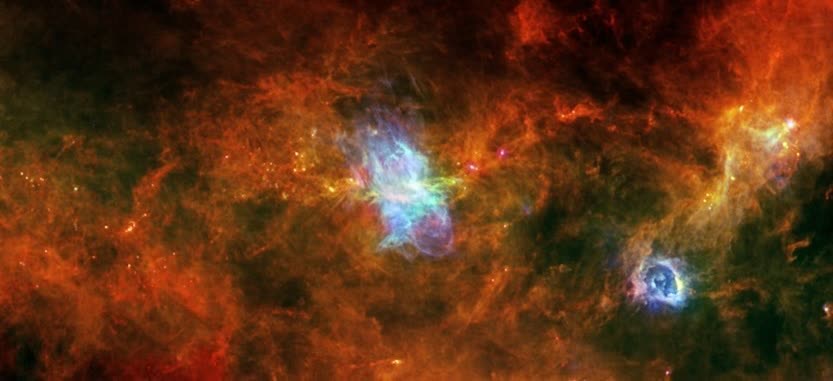In brief: Keeping in line with the rest of 2020, a large-scale search of over 10 million stars for signs of alien technology has turned up… nothing.

As explained in the study, which was published in Publications of the Astronomical Society of Australia, the Murchison Widefield Array (MWA) in Western Australia was used to examine stars in the Vela region for what could be signs of alien civilizations.
The MWA consists of 4096 spider-like antennas that sit in the ground and listen for "technosignatures," or evidence of alien technology, in a search for extraterrestrial intelligence (SETI).
"The MWA is a unique telescope, with an extraordinarily wide field-of-view that allows us to observe millions of stars simultaneously," said astronomer Chenoa Tremblay, from the Curtin University node of the International Centre for Radio Astronomy Research (ICRAR). "We observed the sky around the constellation of Vela for 17 hours, looking more than 100 times broader and deeper than ever before. With this dataset, we found no technosignatures - no sign of intelligent life."

Vela C, a part of the Vela complex that the study examined
Tremblay explained how a radio signal could be identified as coming from an alien civilization: "Think of a car alarm when you leave your lights on, where there are a series of equally spaced 'ping' sounds. The survey looks for a repeating ping that may be escaping noise from a planet or 'a purpose-built signal.'"
This doesn't mean we should give up on ever finding alien life, of course. As Hitchhiker's Guide to the Galaxy author Douglas Adams said, "space is big, you just won't believe how vastly, hugely, mind-bogglingly big it is." The survey was akin to searching for something in an ocean, but only looking at "a volume of water equivalent to a large backyard swimming pool," according to the researchers. Remember, the Milky Way galaxy alone has between 100 billion and 400 billion stars.
Tremblay also noted that the study assumes alien civilizations have technologies similar to our own and that they have developed to the point of using radio waves to communicate. It could also be that any electromagnetic radiation coming from an alien race is too far away or too weak to detect.
New SETI studies will take place in the future using even more powerful telescopes that can survey billions of star systems, so perhaps one day we'll discover that we're not alone in the universe.
https://www.techspot.com/news/86665-astronomers-look-over-10-million-stars-search-alien.html
